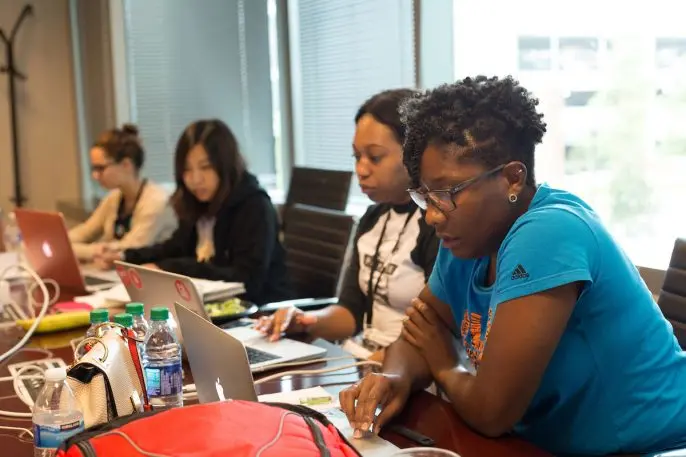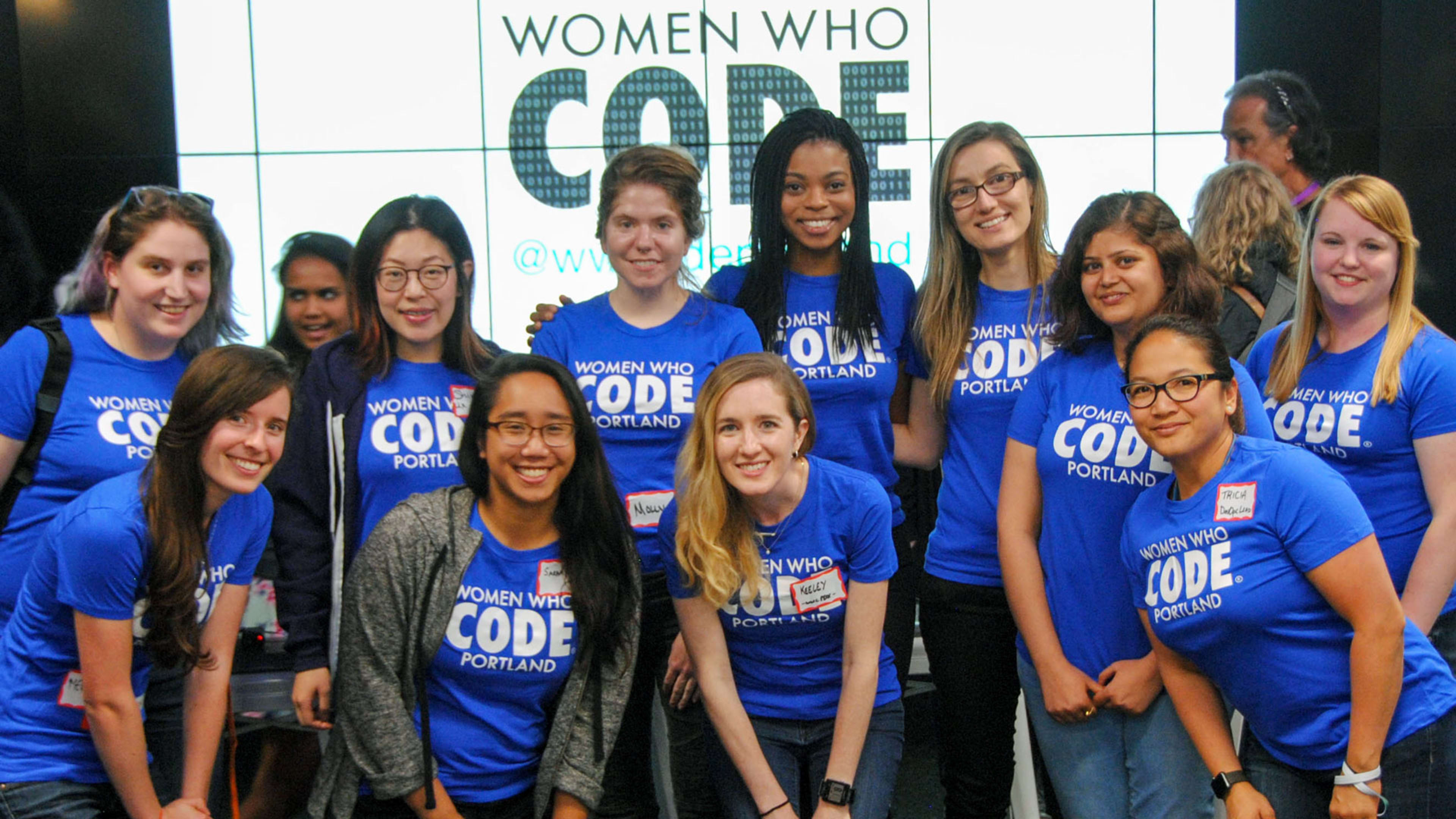You would think that holding both undergraduate and master’s degrees from Stanford (the latter in computer science) would make finding a job in tech a cinch. Facebook, Google, and the like are willing to pay top dollar for these candidates, even at the internship level. Not so for Kate Heddleston.
Heddleston is currently an engineering manager at Shift Technologies, a startup that helps people buy and sell cars. But before she landed her first official job as a software engineer in 2011, Heddleston applied for a tech project management role at Google. Yet when she got to the last round of interviews, she was told by one of the female interviewers that she should go for a marketing role instead.
“I wanted to be a software engineer,” she says, still puzzling over the memory. Heddleston’s undergraduate degree in communications might have been the reason for the suggestion. However, it also had overlaps with computer science at Stanford where there is an effort to have students learn about the interaction of humans and machines. It was not a role she wanted, so Heddleston did not get the job. “It really bothered me at the time,” she confesses. And several years later, she read about Google trying to get more women in tech roles. “[They] told me to leave this field,” she says. “That attitude was pretty harmful and really sad.”
Unfortunately, it was all too familiar to Heddleston, who says she was often one of a small cadre of women in her computer science classes, and there weren’t many female-oriented communities in the discipline. “I didn’t know how I did on tests,” she explains, because there wasn’t a large group of female students to discuss and compare. “Having those reference points means more than you realize,” she says.
Feeling isolated, Heddleston had a hard time soldiering on in her chosen field, but says that things started to change when she attended PyCon and met a group of women all versed in the same programming language that she could share experiences with. Then two years ago, she joined Women Who Code at the urging of Alaina Percival, the CEO of the global community. That, says Heddleston, was a significant step toward feeling like she really belongs. “Community enables women to stay in the field longer,” she says, because they aren’t faced with the loneliness of being the only one in the room. That in turn, she says, can change the demographics of tech, and helps companies learn how to create more egalitarian environments.

Changing that ratio was the primary motivator for Percival to get involved at the inception of Women Who Code. At the time, Percival says, she was working within tech herself and noticed that less than 5% of women were getting recruited into top engineering positions. Women Who Code promised to give them a place to learn new skills, develop their careers, and find themselves in a community where the challenges of being underrepresented could be discussed openly and constructively–and successes could be celebrated.
Five years in, Women Who Code has a global membership exceeding 137,000, representing 20 countries, and holds more than 7,000 free events around the world. Recently, Percival says they started working with companies looking to increase the numbers of women in tech and leadership roles.

Lily Chang, who serves on the board at Women Who Code and who is a VP in VMware’s Strategic Transformation Office, says the company entered a partnership with Women Who Code three years ago. “At that time, we wanted to make an impact on women in tech both internally and externally,” Chang says. It was their specific mission to help women to develop and grow their careers in a fulfilling way, in part to help retain female talent within VMware. “We always have broader perspective globally,” she adds, meaning that they want to encourage leadership and progress, even if it means switching fields for career fulfillment.
With R&D centers in China, India, and Bulgaria, in addition to the U.S., Chang says the company has an opportunity to draw from the wider external community of female engineers who are members of Women Who Code. “We believe that the [talent] funnel is small, and it’s shrinking,” says Chang, especially when it comes to finding women for leadership roles. VMware provides safe, secure spaces for Women Who Code events that foster professional development, in particular making the jump from junior level to senior staff engineer. They also sponsor programs that give the women experience in communications and event planning, as well as building up their professional network. “These are the anchor benefits,” Chang says.
This is part of the company’s overall diversity strategy, which has, since August 2014, been moving the needle. All three global regions of VMware have met their gender representation targets for the last 12 months, and 69% of executive staff met their gender representation goal for the last 12 months. Chang also notes that they’ve received positive feedback from Women Who Code’s city directors who lead these events and initiatives on the ground while developing their own careers.
While she’s not working directly with VMware, Sheree Atcheson, a board-appointed global ambassador with Women Who Code, has also made a positive impact in her role through outreach and launching a branch in Belfast. “In 2012, I graduated from university with a computer science degree, and I wasn’t happy that there were few people like me in my organization,” she says. “I wanted to make a change.”
After Belfast, Atcheson launched branches in London and Bristol as the U.K. expansion director. “During my four and a half years of launching and leading our award-winning U.K. expansion, I became a leader in the diversity and inclusion space, helping companies with their D&I strategies, speaking at global conferences on the work of Women Who Code, and the need–not want–of diversity in organizations,” she says. “I started as a software engineer, became a tech consultant, and am now about to start a new role as a U.K. tech respect and inclusion manager at one of the largest companies in the world,” she says.
In addition to empowering others, Atcheson says she feels that what she says and does matters. “I can have an impact, and so can everyone else, regardless of their gender, sexuality, ethnicity, abilities, or socioeconomic background.”
Recognize your brand’s excellence by applying to this year’s Brands That Matter Awards before the early-rate deadline, May 3.
